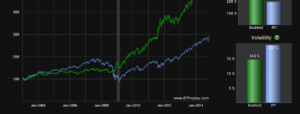Talking Points:
– Chinese PMI dropped to its lowest level in three years, printing at 49.6 v/s an expectation of 49.8, and down from last month’s 49.8 print.
– This continues the strain of bad Chinese data, but over the past two months, stock prices have continued to move up, indicate hopes that stimulus will ‘work.’ But this continued pace of bad data indicates the opposite.
– The December FOMC meeting can become vitally important for the continued rally in Chinese shares, as a rising-rate, tighter-liquidity environment can spell trouble for Emerging Market economies, China included.
Chinese data hasn’t been very encouraging of late, yet stocks are continuing to cling onto gains for the year. The most recent punch on the data front was from PMI, which came in at its lowest level since 2012. Chinese PMI came in at 49.6 for November, down from 49.8 in October and below the 49.8 expectation.
The troubling part about this continued contraction in PMI is the fact that six interest rate cuts since last November combined with multiple reductions to reserve requirements haven’t yet been able to re-fire growth within the Chinese economy. As an industrialized economy, this PMI number is vitally important to continued growth within China, and the continued lag in data makes that 7 percent growth target look even more daunting.
This continues the strains of bad data out of China. In mid-September, Chinese markets were continuing their descent from the summer swoon as continually negative data was indicating the potential for a ‘hard landing’ in the economy. Just a month later, we saw a brutal print that saw imports into China drop by over -20% year-over-year, while even exports came in with a contractionary print at -3.7%, which, again, for an export-based economy is a really troubling thing.
By then, Chinese regulators had already increased stimulus in a variety of ways. We discussed some of these measures in mid-October in the article, More Chinese Stimulus Prods Markets Higher. And, for most intents and purposes, they’ve worked, at least for now, as Chinese stocks stopped their voluminous drop and began ascending higher, exactly as they had before the fears of meltdown had gripped the globe. We discussed this amazing reversal in the article, Don’t Call it a Comeback: Small-Cap Chinese Stocks Throttle Higher. Just a month later, the entire situation seemed different, as Chinese stocks had throttled back by 20% or more, and we noted this in the article Is There a New Bull in the China Shop?













Leave A Comment